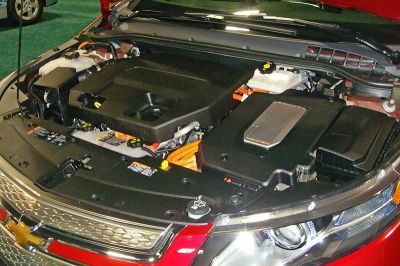Wireless sensing under the hood

Under the hood, fot. Autor Mariordo Mario Roberto Duran Ortiz (Praca własna) [CC BY-SA 3.0
Wireless sensor networks (WSNs) in cars could reduce costs, weight and fuel consumption while enhancing performance. Researchers used advanced experimental and simulation tools to address their technically challenging implementation.
Electronic control units (ECUs) on cars are increasing in number and complexity. The complexity and weight of their associated wiring harnesses for transmission of data and power to all the distributed sensor and actuator components is also increasing. WSNs could be the solution.
However, designers must ensure the same level of reliability, latency and data rate in transmitting real-time sensing data. Doing so within the highly dynamical environment of vehicles and with limited available energy is no easy task. Scientists developed an experimental platform and mathematical descriptions of behaviours with EU funding of the project 'Intra-vehicular wireless sensor networks' (IVWSN). They used them to measure and analyse the physical layer channel characteristics at various sensor locations within an intra-vehicular WSN.
Having selected ultra-wideband (UWB) wireless radio frequency technology, scientists then sought to fill gaps in current knowledge. Most UWB channel measurement campaigns have been performed in non-vehicle applications or with a focus on the passenger compartment or trunk for vehicle tests. In addition, none addressed small-scale fading, the changes caused by small changes in transmitter or receiver positions with minimal changes in the environment around them.
IVWSN developed a physical layer model accounting for both small-scale and large-scale fading. The latter is caused by significant changes in the position of the transmitter or receiver and/or in the environment around them. The detailed channel model was applied to a UWB channel beneath the chassis and within the engine compartment. Scientists were thus able to investigate for the first time ever small-scale fading characteristics and the effect of vehicle motion on large-scale and small-scale parameters.
For the medium access control layer, scientists developed a new scheduling algorithm to provide the maximum level of adaptability. It accommodates changes in transmission time, retransmissions due to packet losses and additional messages. Further, it does so while satisfying packet generation period, transmission delay, reliability and energy requirements. Scheduling was optimised for both one-ECU and multiple ECU cases.
IVWSN has significantly advanced understanding of the behaviours of intra-vehicular WSNs. Implementation of WSNs will lead to important reductions in costs, complexity and weight of vehicular ECUs with enhanced performance.
published: 2015-04-20